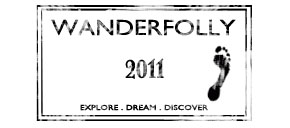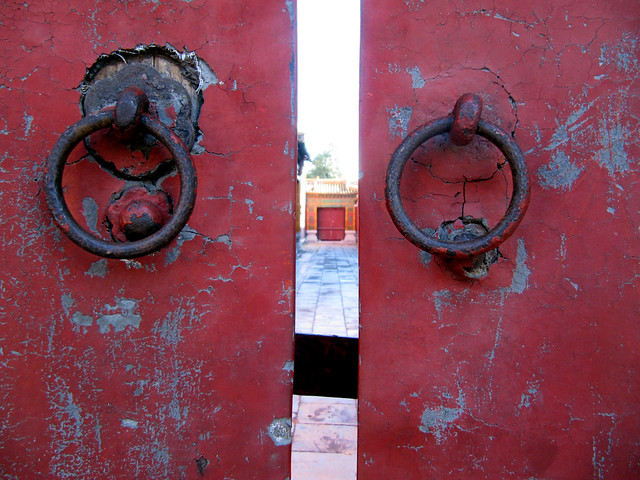
It’s funny how for years you think about visiting Beijing and its Forbidden City (紫禁城) and you imagine it to be this awe-inspiring and grandiose structure, with gold-plated doors and antiques that overflow its halls.
You expect to feel a sense of delight walking through the doors, walkways and halls, a bit like how Château de Versialles of Paris once took your breath away.
You even imagine meeting some royalty strolling through the gardens with their entourage in tow, the gardens a charming one and a place of peace, with pavilions and bridges with waterways flowing underneath. Or perhaps even seeing the king looking down toward his people, just like in the period dramas you’re oh-so-familiar with.
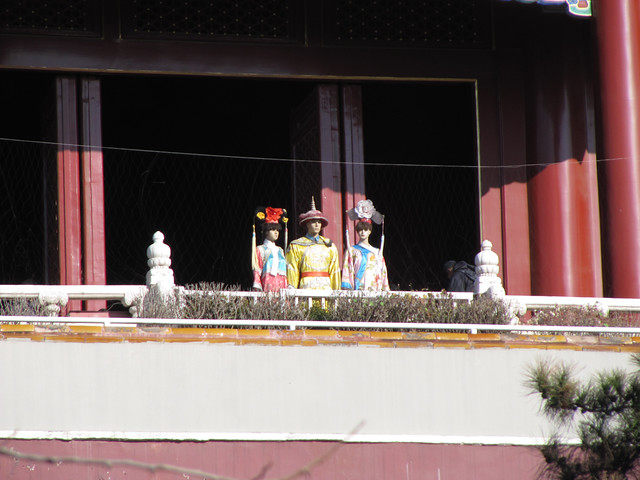
(I kid. Hi there Qianlong! 万岁万岁万万岁!)
But yet, the day you finally visit the Forbidden City, you feel underwhelmed, bored, and utterly disappointed. Though the whole palace area is the largest in the world, the buildings look the same to you (or perhaps you don’t have the eye for appreciating such works of architectural art), the halls are elusive (more on that later), and the gardens so dull you wonder how Emperors and scholars could have spent their days there creating prose and poetry.
And to top it all, you visit the grounds with throngs of other people, making the experience an overwhelming and suffocating one.
And yes that was exactly how I felt when visiting the Forbidden City on a cool autumn morning this November.
Pushing through the crowds of people, I made my way into the Forbidden City. And with no disrespect to the countrymen of my ancestors, I could swear the whole of China decided to visit the Forbidden City that day.
When I saw the crowd gathering at the South Entrance not long after the doors opened, I should have known.

And here is Chairman Mao watching over his people at Tiananmen Square.
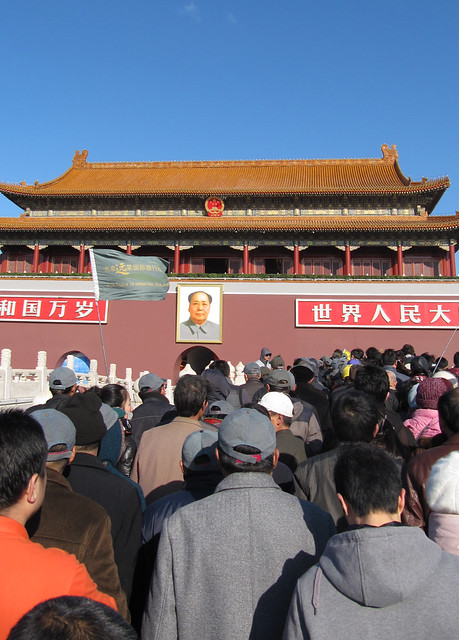
People were everywhere, I could hardly see the ground.
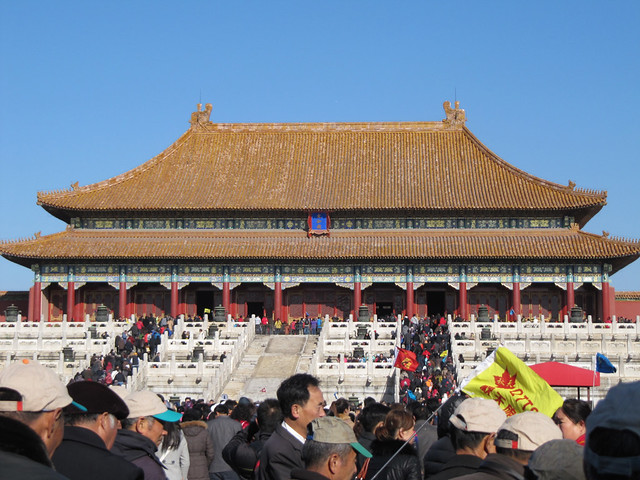
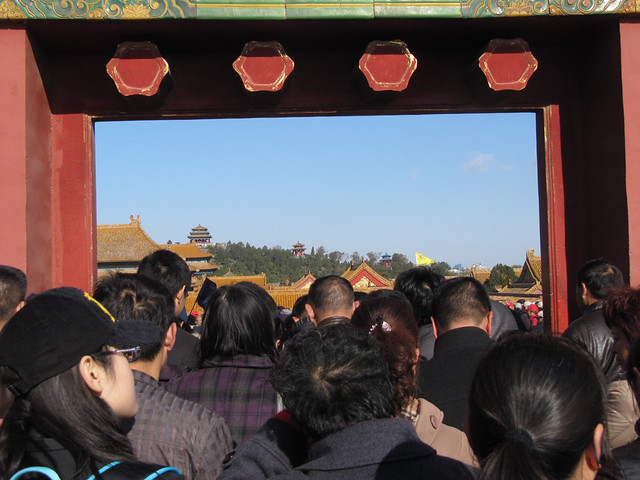
The people came in tour groups. And in a very communistic fashion, each tour group wore colour-coded caps or hats and sometimes even marched in rows.

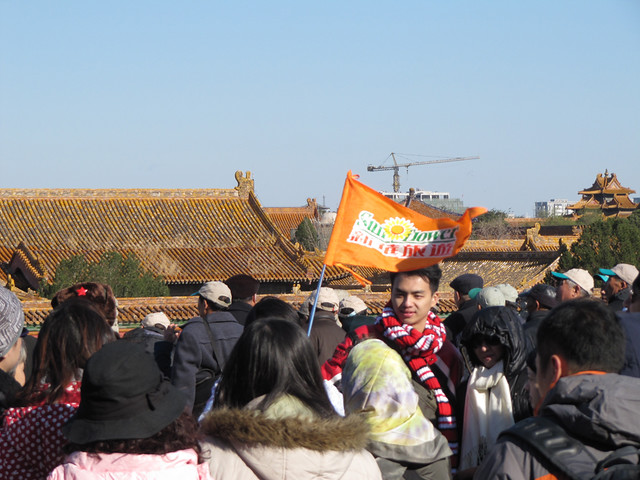
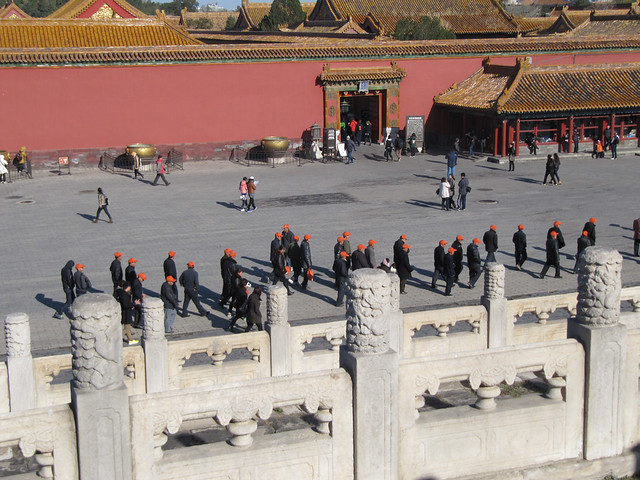
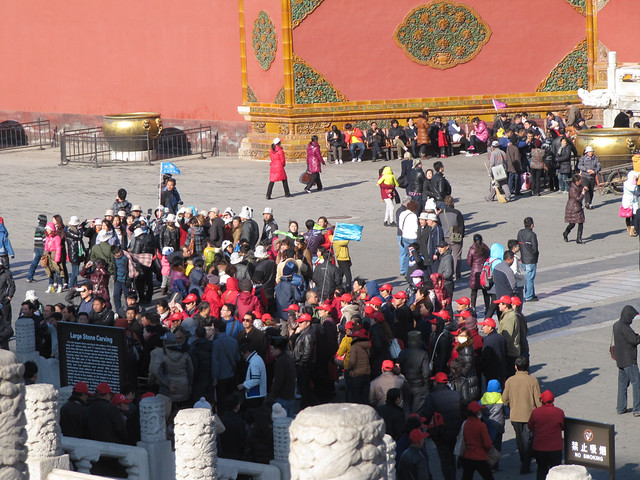
I walked through the grounds of the Forbidden City and listened as my audio guide described the various halls, and its former use and glory. Yet, it was virtually impossible to view any of the halls and its interior.
Visitors are not allowed to enter halls for fairly obvious reasons – everything would be destroyed in a day. Hence, crowds like these gathered at the opening of each hall, each person hoping to get an opportunity to view the interiors.

I made attempts at several halls, but my efforts came to nought. After pushing through a crowd similar to the one pictured above, I finally got a glimpse of the interior of one hall, or rather at least my camera did. I literally had to stretch my hand out to snap this shot as I could barely see what I was photographing.
Here it is, the elusive sight of the interior of one hall. I honestly cannot even remember which hall this is:
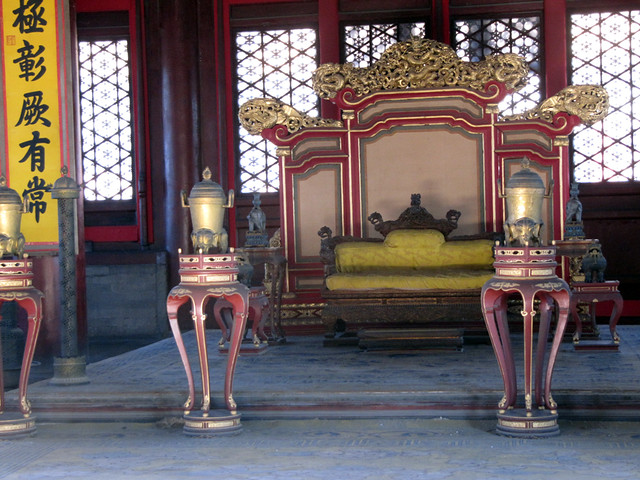
Suffice to say, not every place was jam-packed. If fact, my travel companions and I even managed to find an area that was almost completely empty:
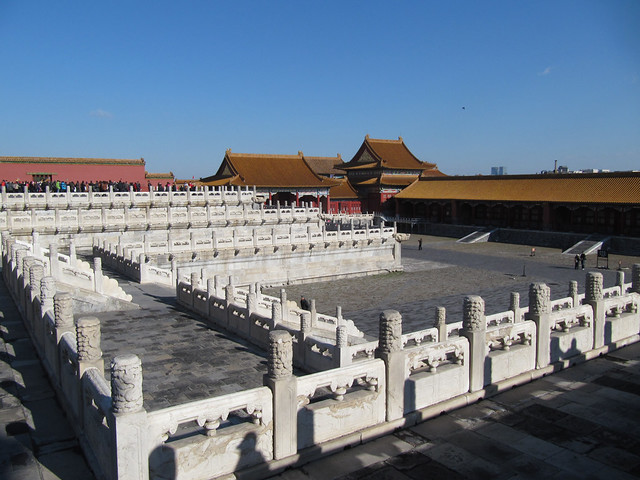
Ah fresh air.
After facing such disappointment at possibly Beijing’s biggest attraction (after the Great Wall), we skipped Temple of Heaven and the Summer Palace.
Would I ever visit the Forbidden City again? Probably not. I can fight crowds in any other city in any other part of the world without paying a RMB40 entrance fee.
But I’m glad I did visit it, for I would have never known, that sometimes, places look better in your head and in period dramas.
[Editor’s Note: I lie. Yes, there were a lot of people and it was truly difficult to view the halls, but it really was not that unbearably crowded that day. I just dramatise for the sake of. But other than that, the sentiment of the Forbidden City being a disappointment is the complete truth.
And despite the Forbidden City being a disappointment, thanks boss for making this trip possible.]
